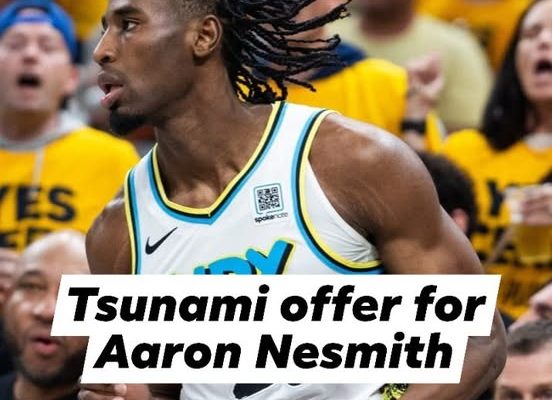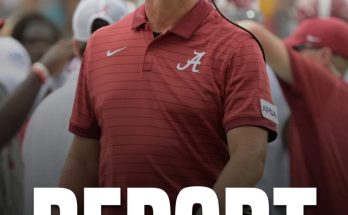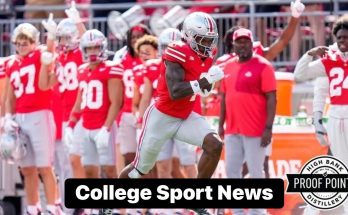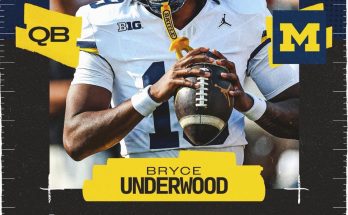In the ever-turbulent world of NBA front offices, the Los Angeles Lakers once again find themselves at a familiar crossroads—a franchise known for swinging for the fences now stands poised to make yet another chess move in hopes of balancing their roster around LeBron James and Anthony Davis. This time, the target is not an All-NBA juggernaut or a former MVP. Rather, it’s a savvy, low-key move that speaks volumes about what the Lakers have learned from previous missteps. The player in question? Aaron Nesmith, the 24-year-old wing from the Indiana Pacers who has quietly developed into one of the league’s more dependable 3-and-D contributors. And while the average fan might scoff at this kind of trade rumor, a deeper dive into what Nesmith brings to the table and how the Lakers are attempting to acquire him reveals far more nuance and foresight than initially meets the eye.
The framework reportedly being discussed isn’t overly complicated, but it’s layered with intention. Rui Hachimura is the centerpiece being dangled by the Lakers, and he’s being packaged with either Dalton Knecht, Gabe Vincent, or Maxi Kleber—depending on what version of the deal goes through. The Lakers would also send out picks to sweeten the pot, and it’s those picks that have some insiders drawing comparisons to the Charlotte Hornets’ deal involving Mark Williams, the 2022 lottery pick who was flipped in a larger package earlier this offseason. That comparison, while not one-to-one in terms of player profile, speaks to the philosophical shift in front office mentality from simply acquiring stars to making precision moves that complement the core. This isn’t about making headlines; it’s about making basketball sense.
To understand why the Lakers are eyeing Nesmith, one must first evaluate the growing importance of role players in today’s NBA ecosystem. The league has evolved drastically over the past decade. Gone are the days when two or three superstars could singlehandedly carry a team to the Finals without significant contribution from the supporting cast. Now, versatility, spacing, perimeter defense, and depth are paramount. Nesmith checks all of these boxes, and perhaps more importantly, he does so without demanding a high usage rate. In other words, he fits seamlessly next to ball-dominant stars like LeBron James.
Nesmith, originally selected 14th overall in the 2020 NBA Draft by the Boston Celtics, came into the league with a reputation as an elite shooter. While it took him a few years to find his rhythm, he has matured significantly since being traded to the Indiana Pacers. With Indiana, he carved out a role as a dependable wing defender capable of hitting catch-and-shoot threes, running the floor in transition, and defending multiple positions. His motor runs hot, and he doesn’t need plays drawn up for him to impact the game. His development into a legitimate rotation player in Indiana’s exciting young core—featuring Tyrese Haliburton, Bennedict Mathurin, and Myles Turner—hasn’t gone unnoticed, and the Lakers appear to be one of several teams expressing genuine interest.
Why now? That’s the natural follow-up question. The Lakers, still smarting from another early playoff exit, are trying to retool around LeBron James as he approaches his 21st NBA season. While James continues to defy age with MVP-caliber numbers, the window for contention is undeniably narrowing. Anthony Davis remains a defensive monster and offensive force, but his health is always a concern. Beyond that, the Lakers’ supporting cast has been wildly inconsistent. D’Angelo Russell may or may not be traded this summer. Austin Reaves is solid, but not a second option. The front office has tried piecing together the puzzle using mid-level veterans and buyout candidates, but none have moved the needle.
In that context, Nesmith represents a youthful, athletic injection of energy and efficiency. While he may not make the same headlines as Kyrie Irving or DeMar DeRozan, the Lakers aren’t in need of more star power. They need role players who understand their assignments. Nesmith does just that. His on/off metrics suggest he lifts lineups without bogging down offensive flow, and his defensive IQ has quietly improved to the point where he’s capable of switching onto guards or wings without getting exposed. At 6’6” with a 6’10” wingspan, he’s exactly the kind of long, switchable defender that has become the league’s gold standard at the wing.
The potential outgoing pieces also say something about the Lakers’ intentions. Rui Hachimura, despite being a fan favorite and showing flashes of scoring brilliance, hasn’t cemented himself as indispensable. He’s more of a shot creator than a complementary piece, and when you have LeBron and AD, there’s not much room for a mid-post, isolation-heavy scorer. In many ways, Rui represents a mismatch—not in the way defenses fear, but in the way roster construction struggles to cohere.
Then there’s Dalton Knecht, the rookie out of Tennessee who dazzled in college and has a lethal outside shot. He may very well become a productive NBA player, but he’s still unproven. Including him in a deal for someone like Nesmith—a player who’s already gone through the adjustment phase and proven he belongs—suggests the Lakers are focused on the present, not a future that might never materialize while LeBron is still wearing purple and gold.
The inclusion of Gabe Vincent or Maxi Kleber as salary fillers, depending on the trade variant, adds another wrinkle. Vincent, acquired last offseason, has struggled with injuries and hasn’t lived up to expectations. Kleber, on the other hand, offers spacing and defense but is likely viewed as redundant with Christian Wood, Jarred Vanderbilt, and AD already manning the frontcourt. Regardless of which package is chosen, the Lakers appear willing to part with mid-tier contracts and a promising young player to get the kind of glue guy every contender covets.
But the real kicker here is the draft compensation. When insiders compare the package to the Mark Williams trade, what they mean is that the picks involved carry real weight. The Hornets traded Williams as part of a larger effort to clear cap space and reorient their rebuild around younger assets. Similarly, the Lakers are reportedly including picks that could hold value given their uncertain long-term trajectory post-LeBron. The Indiana Pacers, a team still figuring out their identity in the Eastern Conference, could be enticed by both the youth and the future assets, especially if they believe their young core can continue to develop without Nesmith.
This move also signals that Lakers President of Basketball Operations Rob Pelinka has pivoted philosophically. For years, the Lakers have been criticized for chasing names rather than fits. The Russell Westbrook saga is perhaps the most glaring example—a big name that clashed terribly with team structure. Even the acquisition of Patrick Beverley, while smaller in scope, pointed to a trend of prioritizing personality and resume over schematic cohesion. But Nesmith? That’s different. This is a player who doesn’t dominate headlines but contributes winning plays. It’s the kind of move that the Denver Nuggets, Miami Heat, or Boston Celtics might make—smart, under-the-radar, and purposeful.
If this trade goes through, the ripple effects could be substantial. It could free up minutes for Vanderbilt and Christian Wood to solidify their roles. It could allow the Lakers to play smaller, faster lineups with LeBron at power forward and Nesmith on the wing. It could unclog the offensive redundancy between Rui and LeBron and provide much-needed spacing for Davis in the post. And most importantly, it would give head coach JJ Redick a reliable two-way player in a system that will likely emphasize ball movement, tempo, and defensive intensity.
Aaron Nesmith’s potential arrival could also have implications for the team’s future beyond the LeBron era. He’s young enough to be part of a transition core along with Reaves, Knecht (if he’s not included), and whoever else the Lakers develop or draft. He’s not a centerpiece, but he’s a pillar—steady, durable, and increasingly valuable in a league that places a premium on versatile wings. While he’s not going to average 20 points per game, he doesn’t need to. What he brings is a stabilizing force that can be deployed in various matchups, particularly in the playoffs where every possession matters.
In terms of player development, Nesmith has grown considerably since his rookie season. His shooting percentages have improved, his defensive awareness has sharpened, and he’s become more comfortable attacking closeouts and making smart passes off the dribble. These are the kinds of incremental improvements that elevate a player from rotation filler to playoff fixture. The Lakers seem to recognize this trajectory and are wisely trying to get in before his price escalates.
The big question is whether the Pacers are ready to move on from Nesmith. They’ve recently extended several players and are trying to balance immediate competitiveness with long-term growth. Tyrese Haliburton is a bonafide All-Star now, and the team is building around him. If the front office feels that Hachimura’s scoring versatility, coupled with Knecht’s shooting and the draft picks, align better with that timeline, then they may be tempted. Especially if they see Nesmith as ultimately replaceable within their system.
This trade wouldn’t just reshape the Lakers’ rotation; it could recalibrate how the league views their front office. A team once ridiculed for haphazard roster construction may be on the verge of executing a trade that is both strategic and forward-thinking. It’s not about swinging for a home run. It’s about hitting a double into the gap and letting the rest of the lineup do the work. Nesmith is not a savior. But he’s a solution—one that addresses real, specific needs rather than vague, star-driven desires.
As the offseason wears on and training camp nears, this potential trade stands out as one of those moments where logic might finally triumph over flash in Los Angeles. Whether the deal materializes or not, the mere fact that the Lakers are aggressively pursuing a player like Aaron Nesmith speaks volumes. They’re thinking beyond the box score, beyond the highlight reel, and beyond the headlines. They’re thinking about basketball. About fit. About purpose. And if that’s not the kind of evolution fans should want to see from their franchise, then what is?
In the end, whether Nesmith dons the purple and gold or stays in Indiana, the principles driving this trade discussion are worth celebrating. It’s a sign that even the brightest lights in the NBA can cast a spotlight on role players. That even in a league driven by stars, the supporting cast still plays the music. And that sometimes, the smartest move a team can make isn’t the loudest—but the one that makes the most sense when it matters most.



